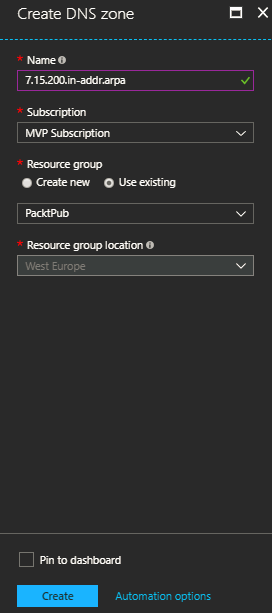Reverse DNS is still one of the most important DNS services, and it is no surprise that it is supported in Azure.
If you don't know too much about reverse DNS, in a nutshell, it does totally the opposite of what DNS does. So, instead of translating names to IPs, it translates IPs to names.
Configuring the reverse DNS zone has some slight differences to creating a forward DNS zone, which you will notice when performing the following steps:
- Search for
DNS zones, and click onAddto add a new one. - Fill the fields in
Create DNS zone, as you have learned earlier, with only one change; for theNamefield, you will write the DNS domain name IP address in a reverse way:- For IPv4, the name is written in the following format:
<IPv4 network prefix in reverse order>.in-addr.arpa - For IPv6, the name is written in the following format:
<IPv6 network prefix in reverse order>.ip6.arpa
- For IPv4, the name is written in the following format:

Figure 5.16: Creating a reverse DNS zone
- Once the zone is created, you need to get it delegated...



